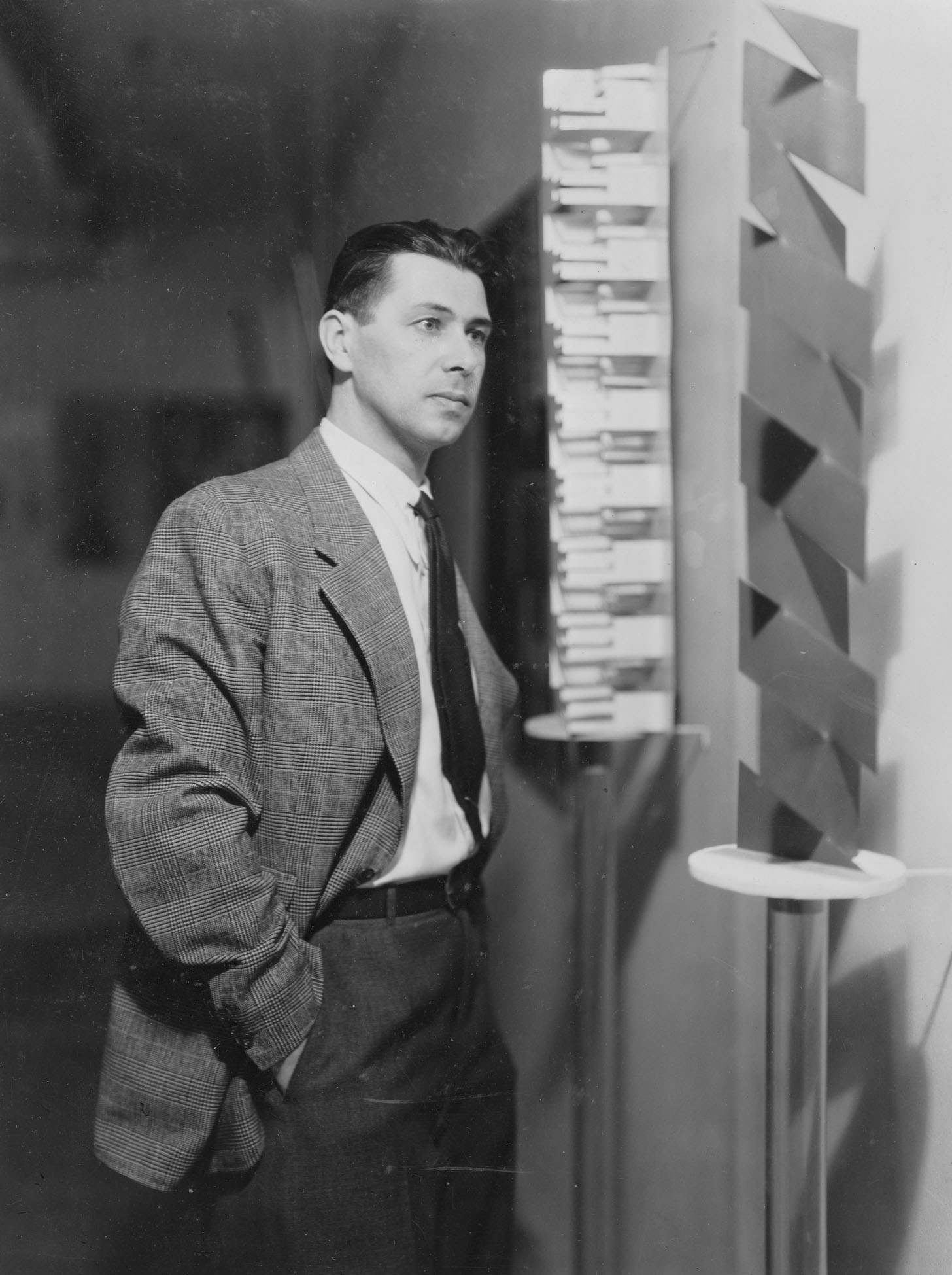About Herbert Bayer
Widely recognized for his innovative graphic and advertising design work, Herbert Bayer was a polymath who explored a great variety of media, including painting, sculpture, environmental and interior design, architecture, and photography. After studying and then teaching at the Bauhaus, he became one of the most important graphic and advertising designers in Berlin. He moved to the United States in 1938, where he enjoyed a richly varied career until his death in 1985. His mastery of an extraordinary range of disciplines is most stunningly evident on the campus of the Aspen Institute. Over a period of 25 years, Bayer developed a masterplan for the Institute and oversaw the execution of its every element, creating a total work of art (Gesamtkunstwerk) in the amazing setting of Aspen.
Born in 1900 in Haag am Hausruck, Austria, a small mountainous village northeast of Salzburg, Herbert Bayer developed an abiding love of nature at an early age. He often accompanied his father, a tax revenue officer, on his walks to remote villages where the young Bayer explored the outdoors relishing all the natural wonders. He exhibited artistic talent, which his mother encouraged. Due to his father’s death in 1917, Bayer’s dream of attending the art academy ended, and he had to seek employment. After apprenticing with architects in Linz and Darmstadt, Bayer was accepted at the Bauhaus in Weimar, Germany in 1921. There he met Wassily Kandinsky, who was to remain Bayer’s mentor for the rest of his life. In 1925, Bayer became a master at the new Bauhaus school in Dessau where he taught typography and what he termed “visual communication.” Dissatisfied with teaching, he moved to Berlin in 1928 where he set up a design studio. There, he created cutting-edge advertisements that were featured in popular magazines such as Vogue and covers for the monthly periodical Die neue Linie. Bayer was also an innovative exhibition designer. Because of his reputation in this field, he was invited in 1938 to design the seminal exhibition Bauhaus 1919–1928 for the Museum of Modern Art in New York.
World War II and family circumstances caused him to leave Europe and settle in the United States in 1938. Two influential people entered his life in the 1940s: Joella Haweis Levy, who divorced her husband, Julien Levy, in 1942, and married Bayer, and, in 1945, Walter Paepcke, the president of the Container Corporation of America. Paepcke, who became a lifelong friend and patron, convinced the artist and his wife, Joella, to move to Aspen in 1946 where they helped transform an abandoned silver mining town into one of the world’s most popular destinations for leisure and culture. What Walter Paepcke began in 1949 as a venue in which to celebrate one of the world’s most influential thinkers, Johann Wolfgang von Goethe, led in 1950 to the creation, with Bayer’s help, of the Aspen Institute for Humanistic Studies. For nearly thirty years, Aspen was Bayer’s home. While there he produced work in diverse media ranging from architecture, graphic design, corporate identities, paintings, and sculpture to earthworks. Rarely has a single individual contributed to so many disciplines at such a highly creative level. This is manifested in his masterpiece, the campus of the Aspen Institute, which he created over a period of 25 years.
While in Aspen, Bayer also met the founder and president of the Atlantic Richfield Company (ARCO), Robert O. Anderson, who would have a profound effect on the artist’s life and career. In 1966, Anderson hired Bayer as a design consultant for his company. His work involved everything from designing buildings, interiors, corporate graphics, furnishings, and tapestries for the various headquarters, as well as supplying the offices with art, including his own work. After suffering two massive heart attacks in 1974, Bayer was forced to leave his beloved Aspen in 1975, and, with the help of Anderson, he settled in Montecito, near Santa Barbara. Despite his health issues, Bayer’s last decade was one of the most prolific. Besides his ARCO projects throughout the U.S., he exhibited widely, created public artwork, lectured, and painted daily. He died in 1985.


2.-1938_BayerMoMA_ArtResource
Digital Image© The Museum of Modern Art/Licensed by SCALA / Art Resource, NY

